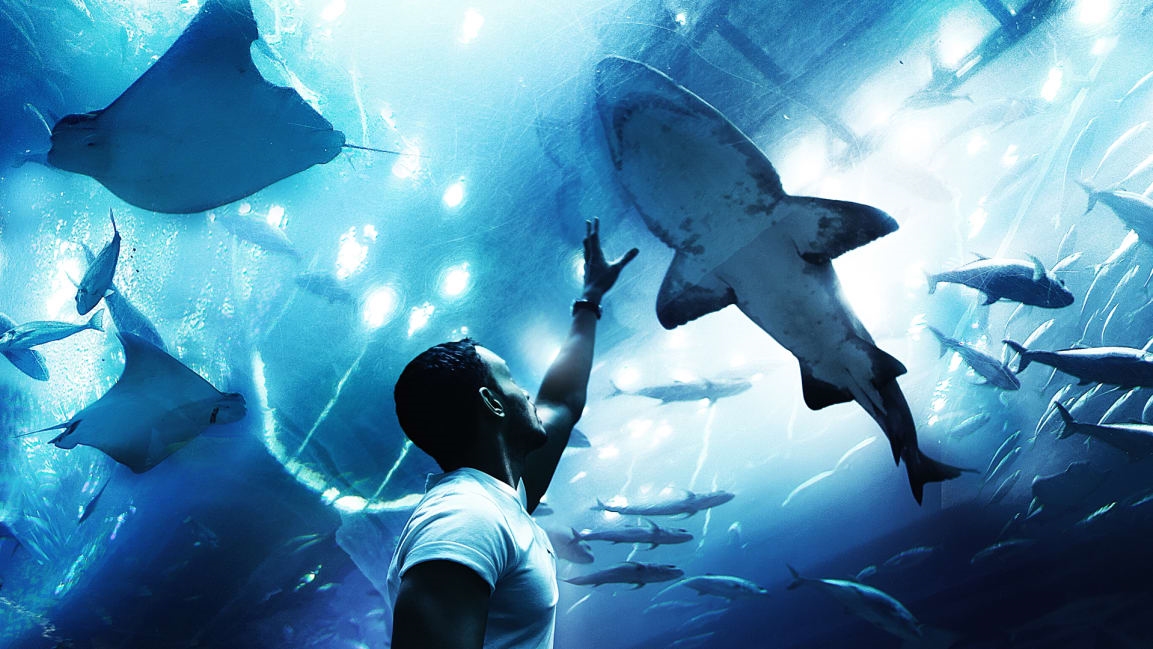These bold New Year’s resolutions will inspire your 2020 goals
Some people play it safe with their New Year’s resolutions; others take it to the extreme.
Last year the three most popular New Year’s resolutions all had to do with diet and exercise, followed by saving more, and then learning a new skill or hobby. Such vague and common goals, however, are easily forgotten; 80% of resolutions are abandoned by mid-February, and only 8% are ever accomplished.
Instead, consider taking your 2020 goal to another level, one that will really force you to break unhealthy habits, break new ground, or beat personal records. Setting such lofty goals won’t just help you expand the limits of your own abilities—it will help keep you accountable. After all, few will be bold enough to ask you about that 10 lbs. you said you’d lose this year, but who wouldn’t want to know more about your goal to swim with a shark, run a marathon in North Korea, or cut a word out of your vocabulary entirely?
Here are five wild, crazy, and bold New Year’s resolutions that will inspire you to take your 2020 goals to new heights.
A new running challenge
After suffering two concussions in relatively quick succession from playing rugby, Nazra Noushad was looking for a noncontact athletic challenge to get herself back in shape. Signing up for a half-marathon would probably be lofty enough for most, but when a friend mentioned they would be competing in North Korea, Noushad couldn’t resist the opportunity to join.
On April 12, Noushad will lace up at the Kim Il Sung Stadium in Pyongyang, North Korea, and approach the starting line in front of a crowd of 50,000 locals.
Noushad, who has been running five kilometers almost every day in preparation, admits that participating in a similar event in Boston or New York would have been challenging enough, but she couldn’t resist the opportunity to visit a part of the world Westerners know so little about. “Curiosity is definitely the biggest thing that drives me in any decision, and it has its faults, but right now it’s kind of overriding that fear,” she says. “I’m genuinely just so curious.”
Noushad adds that she is aware of the risks, but believes that overcoming fear is a key component of a personal goal. “If the whole experience goes well then I think I can come to the conclusion that I can trust my gut and go for crazy things,” she says.
Perhaps more terrifying is that the 19-year-old hasn’t yet told her parents of her plans. “I will after I buy the flight tickets,” she says with a laugh.
“Want” for nothing
Charlene Gage used to do a lot of writing and stand-up comedy, she but couldn’t find the time to keep up with either hobby after she began commuting two hours every day from San Jose to San Francisco. For years Gage talked about how she was only taking a break from these activities but would jump right back into them as soon as she moved to the city.
A year after making the move, however, Gage still finds herself talking about all the things she “wants” to do but hasn’t taken any steps toward completing them. That’s why in the coming year Gage plans to stop talking and start doing by avoiding the word entirely.
“There’s a lot of things I’ve been wanting to do, it’s been a constant thing, and when I look back at all the things I’ve wanted to do there hasn’t been a lot of progress,” she says. “The goal I’ve set in place is to get rid of the word ‘want’ from my vocabulary.”
In 2020, Gage isn’t allowing herself to talk about things she wants to do anymore; either she does them, or she stops talking about them. “If you want to do something then go do it or put a plan in place, identify what the next steps are,” she says. “If you want to do it but you’re not ready, then it’s not something you really want, so don’t put that energy out there.”
10 items or less
Ariane Klassen considers herself environmentally conscious, but her New Year’s resolution takes recycling, reducing, and reusing to a whole new level. In 2020 she plans to purchase only 10 items of clothing or less for the whole year (not including socks and underwear).
She says the challenge, which she has successfully accomplished once before, forces her to be more selective in her shopping, rediscover and repair items she already owns, and reduce her consumption overall.
It all started a few years ago when Klassen was going through her clothes from the year before. “I realized there were things I maybe had worn twice, and I felt really bad about that,” she says. “I think people, especially in North America, we buy and use more than we need, so it’s a way to kind of get back to a reasonable amount of purchasing.”
While it might sound like a good way to save money, Klassen says the goal has nothing to do with reducing her overall clothing budget. “The last time I did this I was more willing to spend a little more on clothing because I wasn’t buying as much, so I might spring for something I wouldn’t normally because I’m only buying 10 things.”
Cut the crap content
Stefan Palios is the founder of a startup dedicated to producing quality digital content, but his personal reading habits haven’t always had such a high standard. After years of watching himself fall down the rabbit holes of clickbait, exaggeration, and hyperbole, Palios is determined to eliminate what he called “hate-reading crap content” in the year ahead.
“Most of the content that I’m defining as ‘crap’ is content that just gets you emotional,” he says. “You start with one article or one YouTube video, and then you end up down a two-hour rabbit hole where you’ve wasted time, learned nothing, and feel bad about yourself for reading all this garbage.”
Though tempted by salacious and emotionally charged headlines in the past, Palios decided to make a change when he noticed that he was no longer just seeking out low-quality content on his own. As time went on he noticed that it was finding him, making it even harder to break the habit.
“I want to eliminate it because social algorithms, whether on social media or content engagement algorithms, privilege engagement. When that happens my hate reading is perceived by these machines as me liking content,” he says, adding that he’ll know he’s accomplished his goal when he sees more quality recommendations. “I want to show it what I actually like by very purposefully engaging with what I like.”
Finding a new swim partner
Peter Bordes has always had an affinity for the sea. The great-grandson of a commercial fisherman and an advocate for oceanic health, Bordes has already accomplished his goals of swimming with a dolphin and a whale shark in the wild. This year, however, he’s looking to take things a step further. “I want to get into the water with a great white shark. Not in a cage,” he says.
Bordes, who serves as both the CEO of a digital advertising platform and the vice-chairman of Ocearch, an organization that helps protect the oceans through data collection, says it’s not just a matter of facing his fears.
“Sharks are a metaphor for the oceans, because they’re one of the most important apex predators in the oceans, and they’re the balance keepers,” he says. Bordes adds that thanks to popular culture sharks have long been misunderstood, feared, and hunted en masse in unsustainable ways. According to the Humane Society 72 million sharks are killed annually, and almost 60% are threatened by overexploitation.
Bordes hopes that swimming alongside a great white shark will raise awareness about the fragility of the species.
“Is it nerve-racking getting into the water with a great white? I’m kind of hoping it is, and I’m hoping it helps me overcome my boundaries of what I think is scary,” he says. “Take a little bit more risk, and you’ll find out more about yourself and what you’re capable of doing.”
(14)



